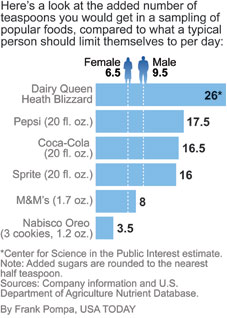At the Vreeland Clinic we use nutrition and diet to manipulate health. Our main goal is to improve overall health and help people feel energetic and youthful. To know if we’ve achieved our goal we rely, in part, on our patients to inform us on how they are feeling. This is not, however, the only marker we use to “check up” on our patients. We use a wide variety of blood work to make sure that along with feeling great, our patients are protected from the dangers of aspects of disease that do not always manifest in overt symptoms until it’s too late.
This blood work is a huge part of our practice and today I am going to share with you the blood work that you should be asking for when you go to your doctor.
1. Particle Size Cholesterol Test
Now, cholesterol is an interesting subject. Knowing the total number is useless. Knowing the breakdown of the “good” cholesterol (HDL) versus the “bad” (LDL) is a little more revealing but still is far from telling the whole story. What you need is to find out the particle break down.
Cholesterol testing has historically been used as the standard indicator for cardiovascular disease classified as HDL (good) or LDL (bad). However, it is actually the lipoprotein particles that carry the cholesterol throughout the body, not necessarily the cholesterol within them, that are responsible for key steps in plaque production and the resulting development of cardiovascular disease.
It is the particle size that is important. Small, dense and hard lipoproteins are dangerous while light and fluffy particles are not quite as worrisome. We know that just as many people with low cholesterol have heart attacks as people with high cholesterol. If total cholesterol was a good indicator of heart disease then why do people with “healthy” levels have heart attacks? It’s because your total cholesterol doesn’t tell the whole story. You must know the particle breakdown to have any real idea about your cardiovascular risk.
Below is a schematic from SpectraCell Laboratories that illustrates why this type of test is important. They are a national lab that runs these tests and their panel is called an LPP panel. There are many other companies that can do these tests. The other lab I am familiar with is Atherotech Diagnostics Lab. They call their test the VAP panel. Either test works. Your doctor can order these tests easily. (Please click the picture to enlarge it).
 2. Fibrinogen
2. Fibrinogen
Fibrinogen is an important factor in blood clotting and increases in response to tissue inflammation. Fibrinogen can help predict the risk of heart disease and stroke. Fibrinogen will not only be high in people with heart disease, but it’s also high in other inflammatory conditions such as rheumatoid arthritis. High levels of fibrinogen also increase the risk of venous thrombosis (blood clots). Blood clots are silent killers that are often discovered too late. This is a simple test that almost all labs are capable of running. If you take appropriate steps, lowering fibrinogen can lower your risk of many inflammatory diseases.
3. Hemoglobin A1C
Having your fasting blood sugar tested is very valuable, but it’s just a spot shot. It only tells you what your blood sugar was at the moment your blood was drawn. And if you followed the instructions, you fasted before that test so your blood sugar is likely as low as it’s going to get. (Remember with blood sugar, lower is better than higher). High blood sugar leads to diabetes. A hemoglobin A1C (or HbA1c) checks your blood sugar control over the last 2-3 months. A much better check! High HbA1c is an independent risk factor for heart disease for people with or without diabetes. Higher HbA1c leads to an increased risk of heart disease and vice versa. HbA1c is another test that every lab can perform and is easily ordered by any physician.
4. DHEA
Dehydroepiandrosterone (DHEA) is a hormone produced by the adrenal glands and is a precursor to the sex hormones estrogen and testosterone. Blood levels peak in one’s twenties and decline significantly as we age. They reach a level of about 20%-30% of one’s youthful peak between the ages of 70 and 80. Healthy levels of DHEA supports immune function, bone density, mood, libido and a healthy body composition. This is another easy test to order and almost all labs can perform it.
5. Homocysteine
Homocysteine is formed in the body from the metabolism of the amino acid methionine. It is inflammatory in nature. High levels have been associated with an increased risk of heart attack, bone fracture and poor cognitive function. Other studies have linked high homocysteine to macular degeneration and gall stones. Some patients, because of a genetic defect in the way they metabolize folic acid, have very high homocysteine. Lowering this is critical for long term health. It is easily lowered with activated B12, activated B6 and activated folate. Homocysteine is easily performed at any lab.
6. C-Reactive Protein
CRP, as it is abbreviated, is another inflammatory enzyme. CRP is a powerful predictor of systemic inflammation and is a great indicator of risk for heart disease and stroke. It may predict heart disease years before it becomes problematic. It identifies at risk populations while they are still healthy. This truly is a great tool. A review of epidemiological data shows that CRP was able to predict heart attack, stroke, peripheral artery disease and sudden cardiac death in healthy individuals with no history of cardiovascular disease. Again, this is a simple test and can easily be ordered by your doctor.
This list is by no means comprehensive, but it’s a good start. Each individual person may require more testing depending on their specific condition. These are, however, a great way to evaluate your overall health and predict disease that might await you years down the road. Once you have found your specific risk factors appropriate steps can be taken to avoid the consequences in your later years.
Tweet it, Like it, Pin it! Share away!
 I have several problems with the new information that’s been plastered all over the media recently about the recent studies:
I have several problems with the new information that’s been plastered all over the media recently about the recent studies:










